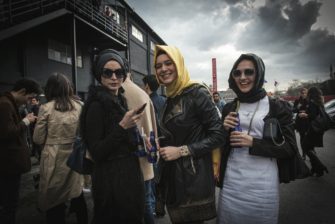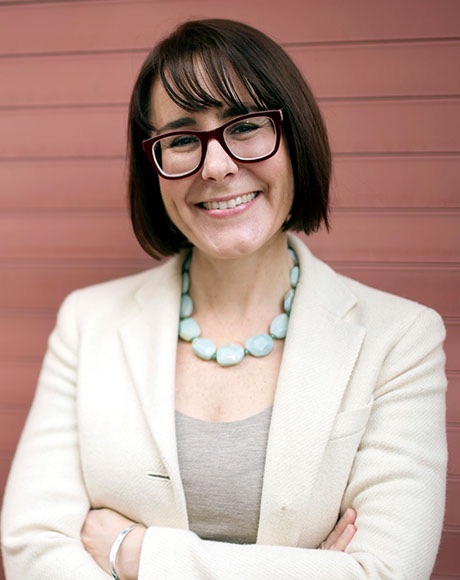
“The political and intellectual history of modernity,” writes historian Robert Orsi, “is also always a religious history.” However, as significant and diverse recent scholarship is now bringing to light, narratives around the political, intellectual, and religious history of modernity often serve not only to illuminate the past, but also to obscure it through the authorization of specific forms of experience and knowledge.
This symposium, entitled “Decolonizing Narratives, Denaturalizing Modernity,” aims to highlight recent scholarship that complicates received notions around the history of modernity. While focusing on distinct temporal, geographical, and religious contexts, in their shared attempts to uncover histories hidden by the dominant discourses of modernity, the authors featured in this symposium uniformly challenge the naturalization of modernity’s emergence and indicate that that the history of modernity has always been (and remains) fundamentally contested.
Robert Orsi’s assertion that the political history of modernity is also always religious history is one of the organizing ideas of this symposium. What might this idea mean for our understanding of a religious tradition as it applies to practices of piety like the use of modest clothing? Specifically, what role does the politics of modernity have in shaping the assumptions about the significance of Muslim women’s dress?
Let’s start by defining tradition. I like historian Marilyn Robinson Waldman’s argument that it is a mistake to see tradition as in opposition to modernity, as merely a depository of old ideas that impede change. She proposes instead we regard traditions as modalities of change, as a way for a society to cope with innovation by allowing it to become accepted and normalized. By this definition religions are traditions, but so too is modernity or versions of modernity. So our question becomes, how does the process of interaction of various ways of coping with change, in this case in Islamic and modern ways, affect Muslim women’s dress? How is “piety” a received notion that helps Muslims deal with a variety of pressures of modernity, including globalization, national development, consumption, and sexual politics?
In my recent book, Pious Fashion, I investigate Muslim women’s modest clothing in three locations—Iran, Indonesia, and Turkey—in order to describe the wide range of meanings conveyed by what women wear. As the comparison of three locations makes clear, when piety is deployed to assist with these processes of adjustment within various cultures, it results in a diversity of practice and belief both within and between communities. And that diversity is shaped as much by local politics as Islam. Muslims’ lives, it turns out, are not completely dictated by religious dogma or law.
This means that although some Muslim women have covered their heads since the time of the Prophet, understanding the significance of this practice today requires a look at recent political histories. Take the three countries discussed in my book: Iran, Indonesia, and Turkey. They all became nation-states in the last hundred years. As part of their respective nationalist awakenings and subsequent nation-building, the boundaries between Islam and the state were established and redrawn, often as part of negotiations between colonizer and colonized. And since Muslim women were regarded as the receptacles and conveyers of tradition, they bore the brunt of the burden of national projects aimed at reforming Islam. The headscarf, as the most visible symbol of Muslim women, became the target of political agendas that often had very little to do with Muslim women themselves. Depending on the location, pious fashion was required (Iran), regulated (Indonesia), or banned (Turkey) as the state pondered what forms of Islam and modernity it wanted to promote or suppress.

These three locations can be understood to reflect three distinct encounters with modernity, that are today reflected in clothing trends in each location. Styles of pious fashion in Tehran show us that the modern Iranian woman might be willing to live by rules not of her own making, but that she also demands the right to interpret those rules. As a consequence, hijab turns out to be not a single form of dress: rather, it includes a range of styles from the full-body covering of traditional chador to tailored short overcoats and headscarves. In some sense, any woman wearing pious fashion participates in the physical and visual segregation of men and women in public, thus reinforcing a gender ideology that supports patriarchy. But some styles are interpreted as expressing allegiance to the current regime, whereas others are viewed as politically subversive, pushing back against state attempts to regulate public morality and presentation through a dress code. Over three decades after the Iranian revolution, hijab still needs to be enforced, evidence that attempts to refashion the female citizen from above have not been entirely successful. In fact if anything, pious fashion has served to display diversity among Iranian women—whether that diversity is based on identity, class, or political aspirations.
In Indonesia, the government’s vision of the modern woman has always involved ideas about her presentation and comportment in public. But for most of the last hundred years, sarong-style skirts and blouses were the clothes officially promoted by the government. That changed dramatically three decades ago when the popularity of jilbab–as pious fashion is locally called–skyrocketed after Suharto resigned. As young, college-educated women increasingly adopted pious fashion, it became a sign of a cosmopolitan woman. In addition, since a headscarf and modest outfit were not historically part of Islamic practice in this country, women were free to wear these items to express a thoroughly modern identity that is entirely compatible with national development and progress.
Muslim women’s clothing in Turkey has been connected with the complex conversation about national identity. The ideal modern Turkish woman does not aspire to strict secularism anymore, even if she does understand herself to be European. She can have a strong Muslim identity, reflected in a specific style of modest dress referred to as tesettür. The prominence of pious fashion in Istanbul is a sign of the waning of the European forms of secularism that dominated much of Turkish politics in the twentieth century. In many ways, wearing pious fashion is a more politically radical act here than in the other two locations, because it involves a turning away from Turkey’s Kemalist legacy.
Muslim men are also required to dress modestly: to cover their bodies at least from the navel to below the knee and to avoid other forms of exposure, like extremely tight clothing. What is most notable about Muslim men’s fashion in the three countries I discuss in Pious Fashion is the widespread adoption of Western dress norms, such as trousers, shirts, and jackets. Men in these locations are almost as covered as women, so in that way their dress is also modest. But men’s clothing does not have to be “pious” in the same way. Men’s clothing is the marker of the nation’s power and modernity; women’s clothing is the marker of its morality, honor, and ethnic identity. In fact, one reason the modern male Muslim citizen can dress in standard Western clothing is because the modern woman at his side is still dressed in local, religiously encoded, garb.

